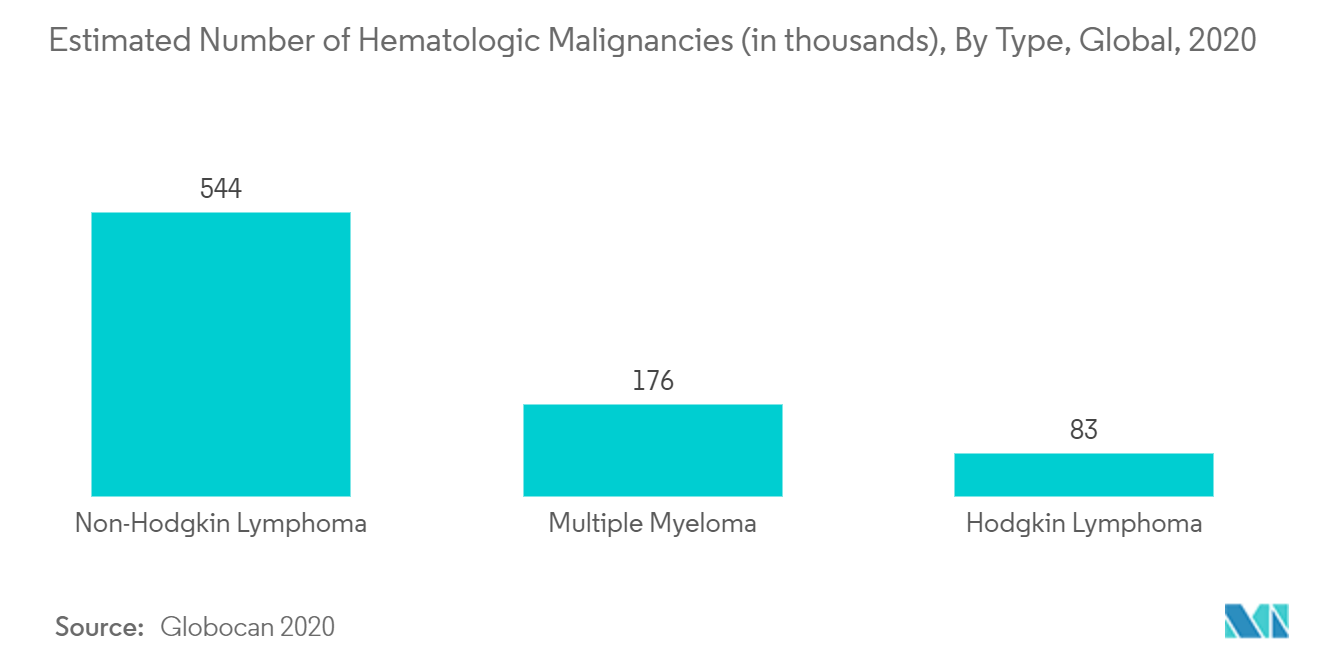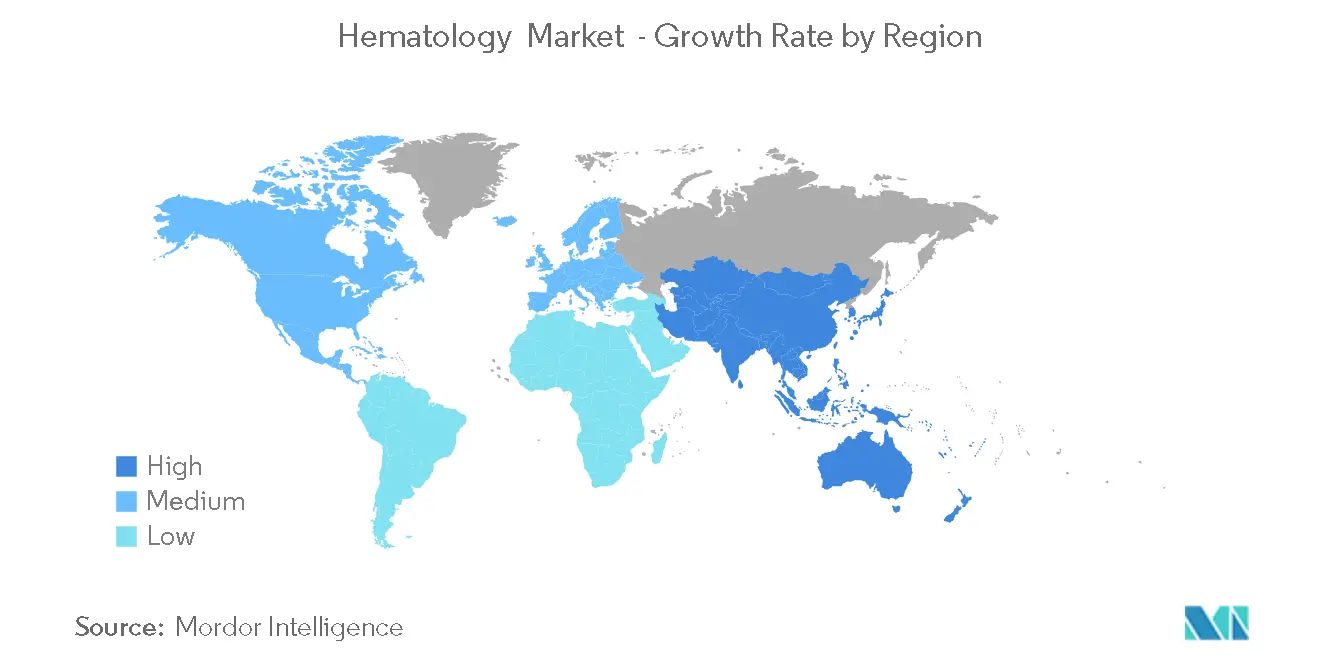Market Trends of Global Hematology Industry
This section covers the major market trends shaping the Hematology Market according to our research experts:
The Hematology Analyzers Segment is Expected to Register Significant Growth Over the Forecast Period
Hematology analyzers are instruments used to run tests based on blood samples. They are used to perform tests such as complete blood count, including red blood cell, white blood cell, platelet, and hemoglobin count, along with characterizing the blood cells to diagnose a disease condition. The growing burden of blood-related disorders, which drives the demand for hematology tests, and advancements in technology for the development of hematology analyzers with advanced features are the major drivers for the growth of the studied segment.
For instance, in May 2020, Beckman Coulter, a subsidiary of Danaher Corporation, launched its DxH 690T hematology analyzer in the United States, which enables mid-volume laboratories to streamline workflow and maximize uptime. Additionally, in July 2022, HORIBA Medical launched new products in its Yumizen H500 & H550 hematology product family, the compact benchtop hematology analyzers with enhanced performance, new features, and increased benefits. These products have been designed to deliver a rapid and comprehensive hematology report with a throughput of 60 tests/hour, 40 tubes autonomy with continuous loading, urgent manual mode; and for running samples through multi-analysis modes and sampling.
Moreover, rising research and development activities proving the efficacies of hematology analyzers are expected to positively contribute to the market growth. For instance, according to a study titled 'Establishment of improved review criteria for hematology analyzers in cancer hospitals' published in February 2021, automated hematologic analyzers are widely used in medical laboratories. This condition in the hospitals will boost the studied hematology analyzers segment of the cell surface markers detection market.
Also, strategic alliances such as acquisitions, partnerships, and collaborations by key players are driving the segment growth. For instance, in September 2020, Cyient entered a manufacturing partnership with Agappe to manufacture certain key components of Mispa Count X at its ISO 13485-certified, state-of-the-art manufacturing facilities in India. The Mispa Count X is an indigenously designed and developed three-part hematology analyzer by Agappe.
Thus, due to the above-mentioned factors, the studied segment is expected to contribute positively to the market growth during the study period.

The North American Region Holds the Largest Market Share, and it is Expected to Follow the Same Trend over the Forecast Period
The United States within North America is expected to witness significant growth in the hematology market in the coming years due to factors such as the increasing incidence of blood disorders, technological advancements, and increasing product launches in the region. As per an October 2021 update by the National Cancer Institute, acute myeloid leukemia is the most common type of acute leukemia in adults. In addition, as per the 2021 statistics by the Leukemia & Lymphoma Society, an estimated 397,501 people are living with or in remission from leukemia in the United States. The growing burden of blood disorders such as leukemia is expected to surge the demand for hematology instruments and reagents, thus driving the market growth in the region. According to the study 'Decreased Iron Intake Parallels Rising Iron Deficiency Anemia and Related Mortality Rates in the United States Population' published in July 2021, the prevalence of estimated anemia in the United States ranged from 10.5% to 106% depending on the age and sex. Thus, the high prevalence of the disease in the country demands a high number of blood tests, thus driving the market.
Additionally, in October 2020, CellaVision AB received the United States Food and Drug Administration's 510(k) premarket approval for its CellaVision DC-1, which is an automated cell-locating device intended to be used in in vitro diagnostics in clinical laboratories, and CellaVision DC-1 PPA, which is intended for the differential count of white blood cells, characterization of red blood cell morphology, and platelet estimation. Further, in November 2020, Sysmex America announced that it would distribute the FDA-cleared ClearVision DC-1 for low-volume hematology laboratories in the United States and Canada. Additionally, in January 2022, Sight Diagnostics received Health Canada approval to provide Sight OLO analyzers for point-of-care settings. Through its distribution partner Inter Medico, Sight will bring the 5-part differential blood testing to emergency departments, hospitals, and other decentralized settings across Canada, thereby driving the market.
Thus, owing to the abovementioned factors, the market is expected to witness significant growth in the forecast period in the North American region.


